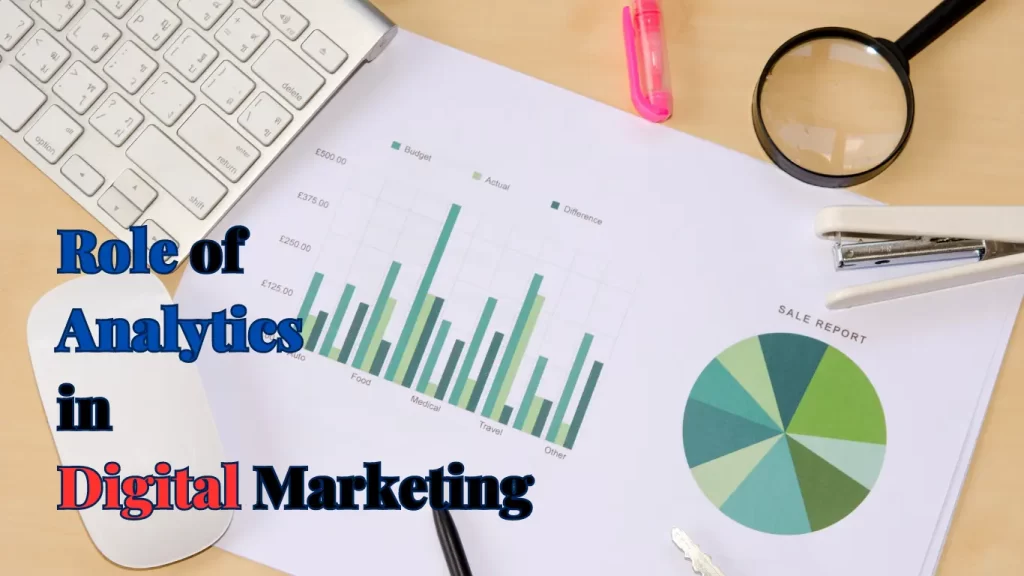A/B Testing in Digital Marketing: The Ultimate Guide
Reading Time: 6 minutesA/B testing in Digital Marketing: The Ultimate Guide A/B testing in Digital Marketing – In today’s competitive digital landscape, businesses are constantly striving to improve their marketing strategies and optimize their conversion rates. A/B testing, also known as split testing, is a powerful technique that allows marketers to make data-driven decisions and improve the effectiveness of their digital marketing campaigns. This article explores the concept of A/B testing in digital marketing and provides insights into its benefits, best practices, and practical implementation. What is A/B Testing in Digital Marketing? A/B testing involves comparing two or more versions of a webpage, email, ad, or any other digital asset to determine which one performs better in terms of achieving the desired goal. It works by dividing the audience into different segments and presenting each segment with a slightly different variant of the asset being tested. By measuring the performance of each variant, marketers can identify the most effective version and optimize their campaigns accordingly. Benefits of A/B Testing in Digital Marketing A/B testing offers several key benefits for digital marketers: Data-driven decision making: A/B testing provides empirical evidence to support marketing decisions, reducing reliance on guesswork or assumptions. Improved conversion rates: By testing and optimizing different elements of a campaign, businesses can increase their conversion rates and achieve higher returns on investment. Enhanced user experience: A/B testing helps identify the variations that resonate best with users, leading to improved user experience and customer satisfaction. Reduced bounce rates: By identifying and addressing elements that contribute to high bounce rates, A/B testing helps retain visitors and encourage them to take desired actions. Continuous optimization: A/B testing allows marketers to continuously refine their strategies, leading to ongoing improvements in campaign performance. Get A Free Consultation Setting up an A/B Test To set up an A/B test effectively, follow these steps: Define your goal: Clearly articulate the specific objective you want to achieve through the A/B test, such as increasing click-through rates or improving conversion rates. Choose the asset to test: Identify the digital asset you want to test, such as a landing page, email subject line, or display ad. Create variants: Develop multiple versions of the asset, with each variant containing a distinct element you wish to test (e.g., headline, call-to-action button, or color scheme). Divide your audience: Split your audience randomly into different segments, ensuring each segment is exposed to only one version of the asset. Run the test: Deploy the different variants simultaneously and measure their performance over a predetermined period. Collect relevant metrics and data. Analyze the results: Evaluate the performance of each variant by comparing the collected data and metrics. Determine which variant performed better in achieving the desired goal. Choosing Variables to Test When conducting A/B tests, it is essential to choose variables that have a significant impact on the desired goal. Here are some common variables to consider: Headlines and subheadlines: Test different variations of headlines and subheadlines to assess their impact on click-through rates and engagement. Call-to-action buttons: Experiment with different sizes, colors, and wording of call-to-action buttons to determine the most effective combination. Images and visuals: Assess the impact of different images, videos, or graphics on user engagement and conversion rates. Layout and design: Test different layouts, font styles, color schemes, and overall design elements to enhance user experience and capture attention. Content variations: Experiment with different content formats, lengths, or tones to determine which resonates best with your target audience. Conducting A/B Tests in Digital Marketing To conduct an A/B test effectively, keep the following best practices in mind: Test one variable at a time: Isolate variables to accurately identify the impact of each element on the desired goal. Run tests simultaneously: Deploy variants simultaneously to minimize the impact of external factors and ensure fair comparisons. Ensure statistically significant sample sizes: Use statistical analysis to determine the required sample size for reliable results. Monitor and track results: Continuously monitor the performance of each variant during the testing phase to identify early trends or anomalies. Be patient: Allow sufficient time for the test to run before drawing conclusions, as results may vary over time. Get A Free Consultation Analyzing A/B Test Results When analyzing A/B test results, consider the following factors: Statistical significance: Ensure the observed differences between variants are statistically significant and not due to chance. Conversion rates: Compare conversion rates between variants to identify the most effective version. User engagement metrics: Analyze metrics such as click-through rates, bounce rates, time on page, and scroll depth to gain deeper insights into user behaviour. Segmentation analysis: Conduct further analysis by segmenting the audience to identify specific user preferences or behaviours. Optimizing Based on Test Results Once you have identified the winning variant, optimize your digital marketing campaigns based on the test results: Implement changes: Apply the winning variant to your live campaigns and assets. Iterate and refine: Continuously iterate and refine your campaigns based on new insights and A/B tests. Test new variables: Expand your A/B testing to include new variables and elements for ongoing optimization. Get A Free Consultation: https://www.arrowmarketing360.com/contact-us Get A Free Consultation A/B Testing Best Practices To ensure successful A/B testing, follow these best practices: Set clear objectives: Clearly define the objectives and goals you want to achieve through A/B testing. Test high-impact variables: Focus on variables that have the potential to make a significant impact on your marketing efforts. Leverage data-driven insights: Base decisions on data and insights gathered from A/B tests rather than relying on assumptions or personal preferences. Continuously optimize: Treat A/B testing as an ongoing process, and consistently seek ways to improve your campaigns. Common Mistakes to Avoid When conducting A/B tests, watch out for these common mistakes: Testing too many variables: Testing multiple variables simultaneously can make it challenging to determine the specific impact of each element. Drawing premature conclusions: Allow tests to run for an appropriate duration to gather sufficient data before drawing conclusions. Ignoring statistical significance: Failing to consider statistical significance may lead to inaccurate conclusions.
A/B Testing in Digital Marketing: The Ultimate Guide Read More »


